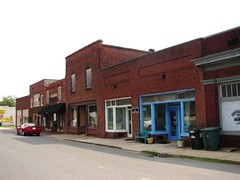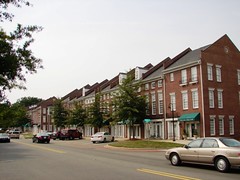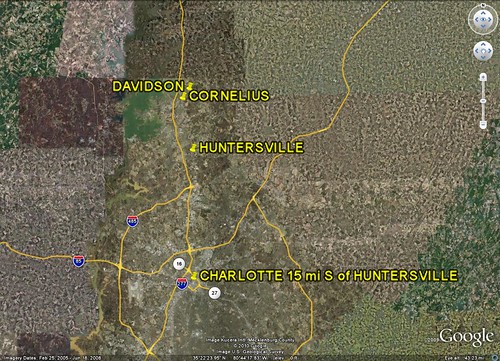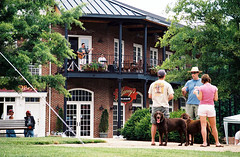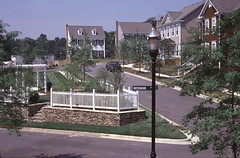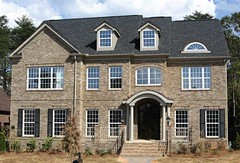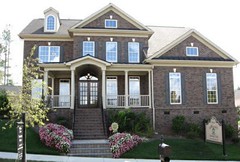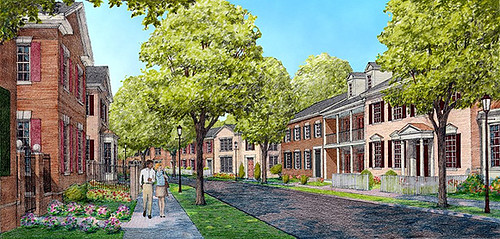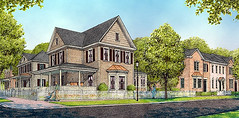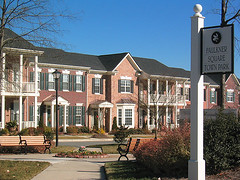Lessons from the Sun Belt: replacing sprawl with smart growth requires sustained commitment

Posted March 4, 2010 at 4:25PM
For smart urbanism to be more than a boutique product, it must become not an experiment but standard practice in jurisdictions across the county. When Parris Glendening was governor in the late 1990s and early 2000s, for example, the state of Maryland had real leadership on progressive land use; it was just beginning to make progress. But Glendening’s work was unfinished, and his successor quickly dismantled the state’s smart growth office and gave lip service at best to the state’s pioneering land use laws. As a result, instead of being strengthened, those programs soon lapsed into not-so-benign neglect, and the state’s landscape shows the unfortunate results.
Writing for Citiwire, Charlotte Observer columnist Mary Newsom now reports that something similar is happening in that North Carolina city’s affluent suburbs. Huntersville, Cornelius, and Davidson are all once-rural small towns that have now essentially become commuter suburbs for Charlotte. Each of them has attempted to grapple with growth pressures:
“A little more than a dozen years ago, a collection of three adjacent suburban towns in the sprawling Sun Belt region of Charlotte did something extraordinary. After months of public workshops, lectures and community discussions, months of looking at slide shows to choose what kinds of streets, stores, houses and apartments they wanted for their towns, they revamped their town codes. They aimed to discourage conventional suburbia and encourage traditional neighborhood development, transit-oriented projects and farmland preservation . . .
“’The torch didn’t get well passed,’ says Bill Coxe, transportation planner in Huntersville, a one-time mill-town and railroad hamlet that has grown from less than 3,000 people in 1988 to an estimated 39,000 in 2006. In both Huntersville and the next-door town of Cornelius, early enthusiasm for concentrating development into higher density nodes and for pushing more growth into the towns’ tiny, historic downtowns has faltered, victim of elections and the departures of some key planners, mayors and town managers. It hasn’t helped that a long-wished-for commuter rail line remains in funding limbo.”
Newsom cites a city-owned property in Huntersville at a planned commuter rail stop that is ideal for mixed-use, walkable development. That was once the plan. But now it seems destined to become a single-use police station instead. Not mincing words, Bill Coxe told Newsom that “The cadre who believed in it moved on. Now you just have a bunch of suburbanites. And they just don’t get it.”
Newsom interviewed David Walters, who teaches at UNC-Charlotte and consulted on the revamping of town ordinances in favor of smart growth in Huntersville, Cornelius, and nearby Davidson:
“Walters . . . thinks the inability to stick to community plans is likely a continual problem, especially rapidly growing suburban areas such as Huntersville. He’s right. People move away. They forget. They elect new politicians. Time changes everything.
“Even if 15 years ago hundreds of people devoted hundreds of hours to learn a better way to grow, Walters reminds us, you need ‘constant vigilance, constant education, constant programming of public events to keep the issues alive.’”
One of the more ambitious projects near Huntersville has been Vermillion, a 400-acre development designed by new urbanist firm Duany Plater-Zyberk. But, as reported by Doug Smith in his “Next Big Thing” column, Vermillion’s developers took stock of their market after completion of the project’s first phase and decided to cut its planned density in half. The project’s next phase includes executive-styled, 4000-square-foot homes on large lots with curving streets and a 2.5-mile linear park, advertised as convenient to Interstate 77. One might as well add, “otherwise known as conventional, high-end suburbia.” While DPZ architect Tom Low maintains that the development’s commitment to new urbanism remains intact, it’s apparent to this writer that the definition is being stretched beyond what most people would consider “urban” or even “new.”
In the project’s defense, Newsom wrote in 2007 on her blog The Naked City (great title; in the Citiwire piece, she also invokes Bob Wills and the Texas Playboys, so she’s earned some credibility with me) that “the new phase of Vermillion will also include more townhomes and three-level dwellings, and [developer] Bowman is planning to add more retail. It’s within walking distance of a planned transit stop and the core of old, downtown Huntersville.”
More encouraging, perhaps, is the continuing commitment to progressive land use principles in the town of Davidson, not far from Huntersville and Cornelius. Newsom reports that Davidson continues “religiously” to pursue a vision that directs most growth into already developed areas, protects its historic downtown, and conserves open land in the nearby countryside.
My friend Victor Dover and his colleagues at Dover Kohl town planners have been helping guide Davidson’s concept. From the Dover Kohl web site:
“Home to Davidson College, the town enacted sweeping reforms to its land development regulations based on the principles of new urbanism. This neighborhood [see images above] is the first sizable project permitted under the new rules. Veteran developer Doug Boone collaborated with Dover, Kohl & Partners to create the concept plan, refine the mix of building types, review architects' plans, and define a marketing strategy. A variety of housing options, generous green space, and a mixture of uses combine to create a memorable extension of the historic town.”
As always with Victor’s projects, it certainly looks fabulous.
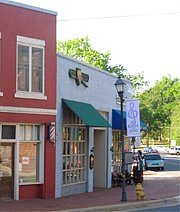 But Davidson may be a special case, “enamored of itself,” in Newsom’s words. She quotes David Walters as saying that the town’s long-time mayor, Randy Kincaid, “got it,” and there has been relatively little turnover on the Davidson’s governing board. Walters says the town’s “sense of specialness” has helped it maintain a commitment that has been more fleeting elsewhere.
But Davidson may be a special case, “enamored of itself,” in Newsom’s words. She quotes David Walters as saying that the town’s long-time mayor, Randy Kincaid, “got it,” and there has been relatively little turnover on the Davidson’s governing board. Walters says the town’s “sense of specialness” has helped it maintain a commitment that has been more fleeting elsewhere.
So, what’s the lesson in all this? Mecklenburg County, where these communities are located, is as good a poster child as any for the challenges associated with Sun Belt sprawl. It’s a part of the “real” America in a way that, I submit, Washington, New York and San Francisco are not. I think the lesson is that, to borrow an overworked cliché, we are in a marathon rather than a sprint. There are going to be setbacks, variations, and imperfections even in projects and policies that are mostly good. We must keep our eyes on the prize, hold on, and work not just for political advances that disappear with political changes, but for deeper, cultural progress as well.
